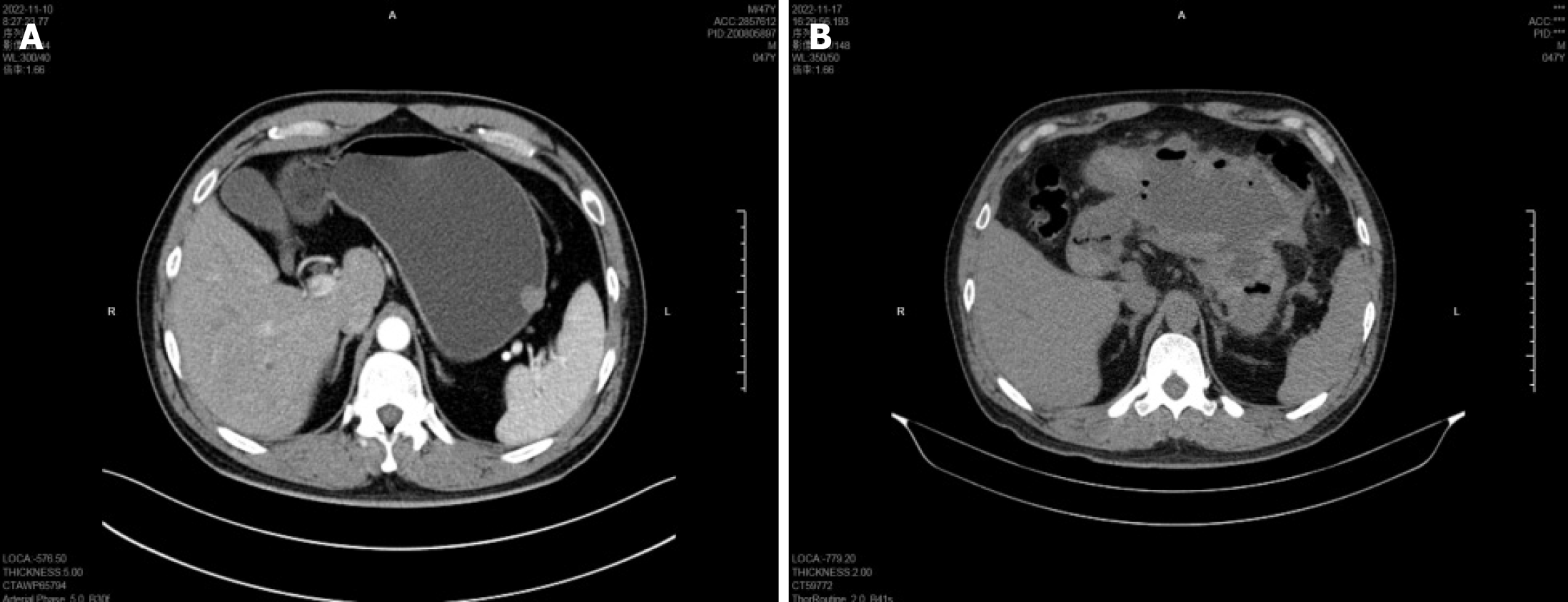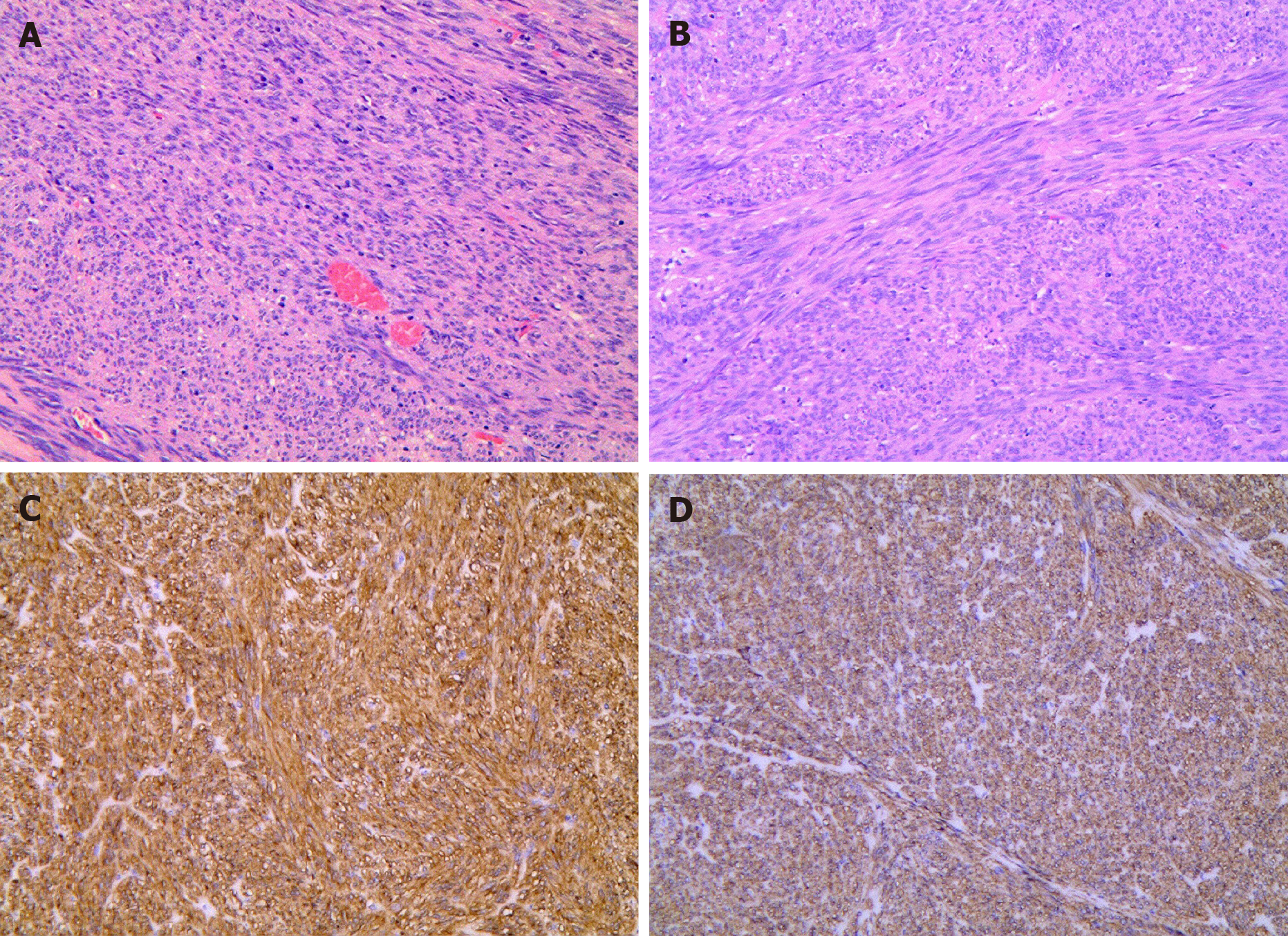Copyright
©The Author(s) 2024.
World J Gastrointest Surg. Feb 27, 2024; 16(2): 601-608
Published online Feb 27, 2024. doi: 10.4240/wjgs.v16.i2.601
Published online Feb 27, 2024. doi: 10.4240/wjgs.v16.i2.601
Figure 1 Preoperative endoscopic examination results.
A: Endoscopic image showing a hemispherical protrusion, approximately 16 mm in diameter, located at the upper gastric curvature adjacent to the stomach fundus, with a smooth surface mucosa and poor mobility; B: Endoscopic ultrasound image showing a mass 19.3 mm × 16.1 mm in size, derived from the muscularis propria, which partly grew outside the cavity. The echo pattern of the mass was uniform and at a low level.
Figure 2 Abdominal computed tomography examination.
A: Gastric computed tomography (CT) illustrated a well-demarcated mass, 16 mm × 15 mm in size, demonstrating mild enhancement, with an intact mucosal line; B: Abdominal CT revealed a large amount of encapsulated fluid and gas accumulation around the stomach.
Figure 3 Postoperative pathological examination results.
A and B: The tumor was located in the muscularis propria and was a spindle cell tumor, arranged in a bundle-like interweaving pattern with mild nuclear atypia (H&E, original magnification × 100); C and D: Immunohistochemical staining of tumor cells showed diffuse positivity for CD117 (C) and DOG1 (D), which were diffusely expressed on the surface of cell membranes.
- Citation: Lu HF, Li JJ, Zhu DB, Mao LQ, Xu LF, Yu J, Yao LH. Postoperative encapsulated hemoperitoneum in a patient with gastric stromal tumor treated by exposed endoscopic full-thickness resection: A case report. World J Gastrointest Surg 2024; 16(2): 601-608
- URL: https://www.wjgnet.com/1948-9366/full/v16/i2/601.htm
- DOI: https://dx.doi.org/10.4240/wjgs.v16.i2.601











